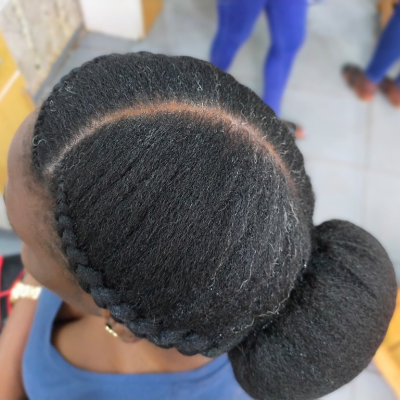- Support 24/7
- +1 (480) 468-4543
- livara@mylivara.com
Are Your Hair Products Causing Breakouts? How To Deal With It

How To Revive Natural Hair After Swimming
August 15, 2024
Debunking 9 Myths About Natural Hair: Truths You Need To Know
August 17, 2024
Dealing with breakouts can be a frustrating experience, especially when you’re not sure what’s causing them. While we often blame environmental factors, diet, hormones, or skincare products, there’s another potential culprit that’s often overlooked: your hair products. According to an in-depth article by Byrdie, where they consulted two board-certified dermatologists, hair products can indeed be the root of your acne woes. Fortunately, once you’ve identified this as a potential issue, there are several effective strategies to help manage and reduce these breakouts.
Why Hair Products Can Cause Breakouts
Breakouts can happen for many reasons, and just like skincare products that don’t suit your skin type, hair products can also trigger acne. Dr. Lauren Penzi, a board-certified dermatologist, explains that certain hair products can cause a specific type of acne known as “pomade acne” or “acne cosmetica.” This acne often shows up as whiteheads and small, flesh-colored bumps on the forehead, hairline, and back. The main offenders are ingredients like oils, silicones, and waxes, which are known to be comedogenic (meaning they can clog pores).
Even if you’re diligent about washing your face or using non-comedogenic skincare products, hair products can still leave a residue on your skin, leading to clogged pores and subsequent breakouts. Studies have shown that using a non-comedogenic hair routine can improve mild-to-moderate acne on both the face and body .
How to Prevent Breakouts from Hair Products
1. Minimize Skin Contact with Hair Products
A key tip is to minimize direct contact between your hair products and your skin. Products like sprays, oils, and leave-in treatments can easily end up on your face, neck, or back, contributing to clogged pores. To avoid this, be careful when applying these products, keeping them away from your skin. Dr. Penzi advises washing your hands after applying hair products to prevent accidental transfer to your face.
2. Wash Your Bedding Regularly
Keeping your bedding clean is an often overlooked but crucial step in preventing breakouts. Pillowcases and sheets can accumulate residues from hair products, which can transfer to your skin while you sleep. Dr. Penzi recommends washing your bedding, especially pillowcases, at least once a week. It’s also important to clean items like hats, headbands, and visors regularly, as these can also harbor product residue.
3. Adjust Your Shower Routine
The order in which you shower can also make a difference. Dr. Penzi suggests washing your hair before washing your body to ensure that any residue from shampoos or conditioners is thoroughly rinsed off your skin. Cosmetic and medical dermatologist Dr. Blair Murphy-Rose adds that this applies to other hair treatments as well. By washing your body and face after applying hair treatments, you can remove any leftover residue that might otherwise contribute to breakouts.
4. Be Cautious with Leave-In Treatments
Leave-in treatments, such as masks, oils, and detanglers, are often the major culprits in hair-related breakouts. While they’re undoubtedly great for your hair, these products stay on your hair for extended periods, increasing the likelihood of contact with your skin. Dr. Murphy-Rose notes that even a microscopic droplet of hair oil can be enough to cause an issue, especially when heated. To minimize the risk, avoid applying these products near acne-prone areas and make sure to wash any exposed skin afterward.
5. Avoid Pore-Clogging Ingredients
The first step in preventing breakouts from hair products is to be mindful of the ingredients. If you have sensitive skin that may be prone to breakouts from hair products, take a closer look at both your skincare and haircare products. Dr. Penzi suggests switching to products labeled as non-comedogenic, oil-free, or non-acnegenic. These labels indicate that the product is less likely to clog pores and cause breakouts. Since most hair products may not have these labels, you can determine if a haircare product is comedogenic by cross-referencing ingredients with online comedogenicity scales to see if they’re likely to cause breakouts. Researching unfamiliar ingredients individually can also help you identify potential risks. This elimination method can help you determine whether your hair products are contributing to your skin issues.
The Final Takeaway
While hair products can indeed cause breakouts, following these practical tips can help prevent them. You don’t have to give up your favorite hair care products entirely—just be a bit more mindful about how you use them. By taking these precautions, you can keep your skin clear and healthy without sacrificing the benefits of your hair routine. If your breakouts persist, it’s always a good idea to consult a dermatologist for personalized advice. And don’t forget, you are a gem.
Source: Are Your Hair Products Causing Breakouts? Derms Share What to Do About It



